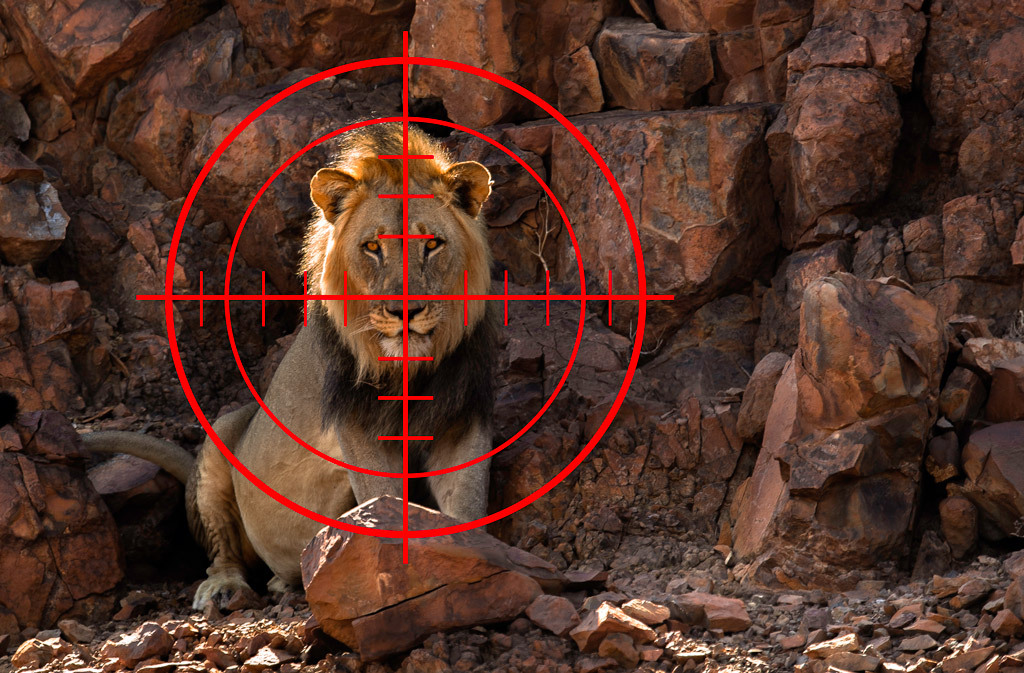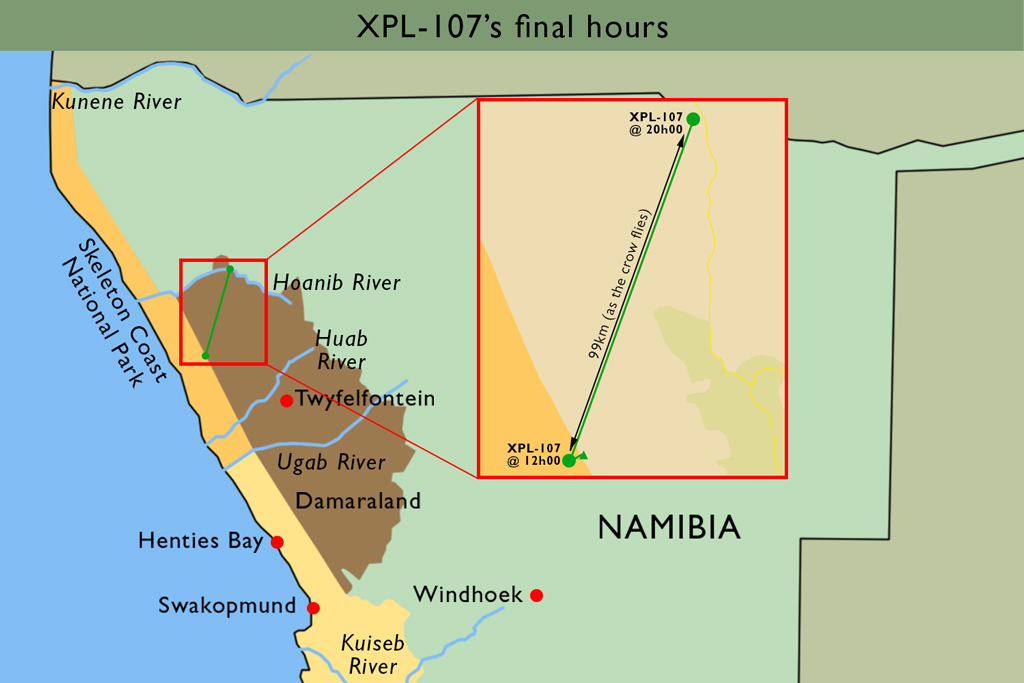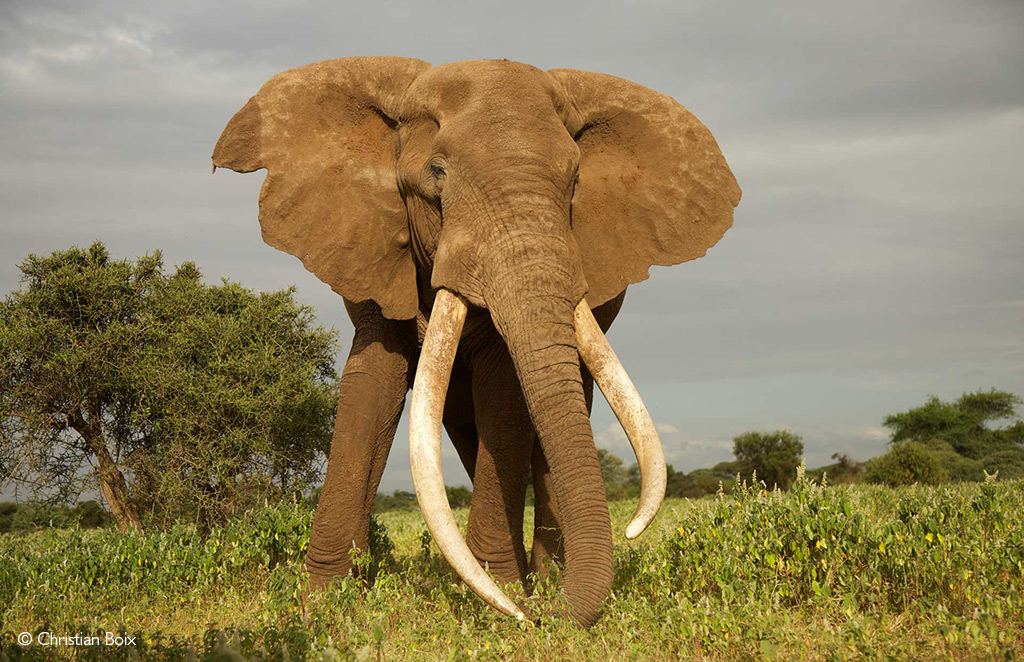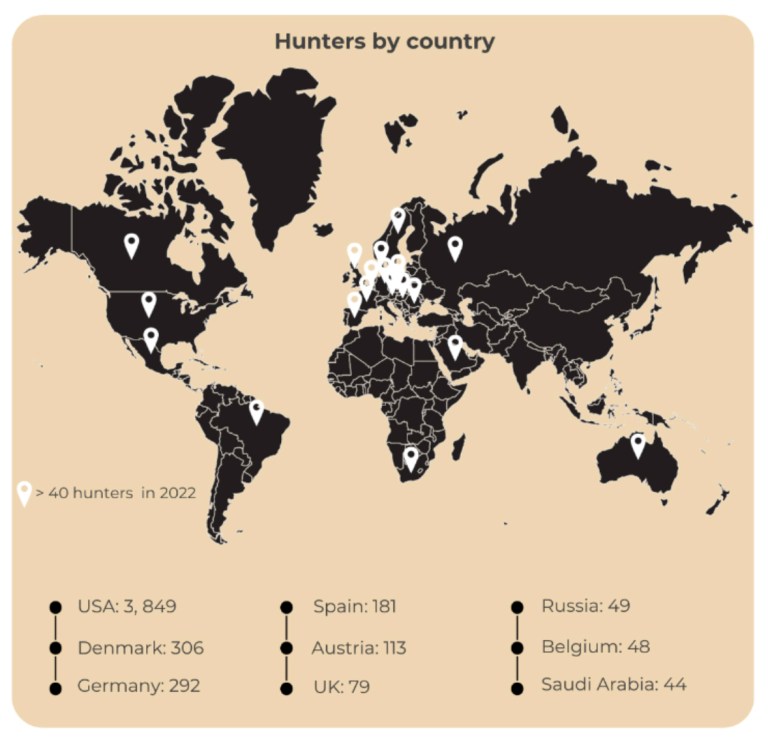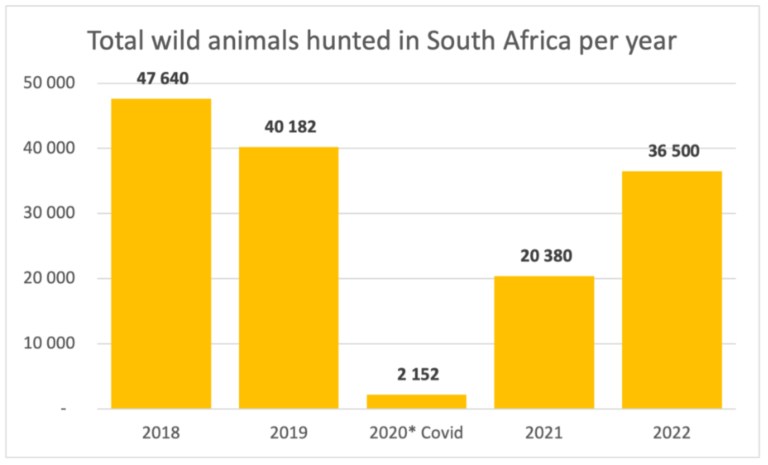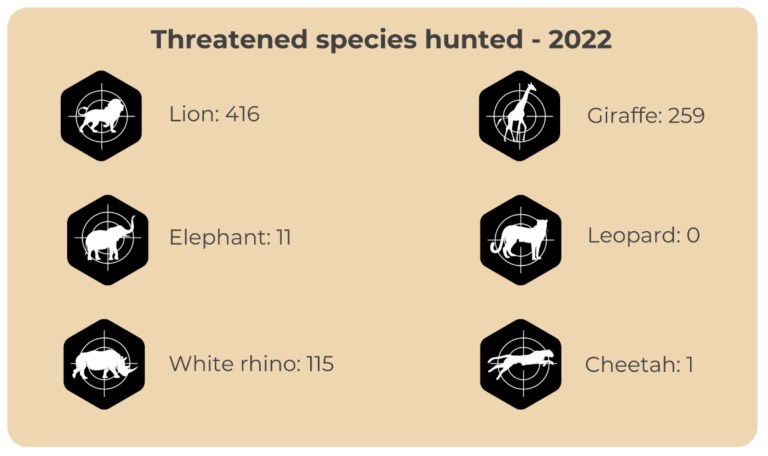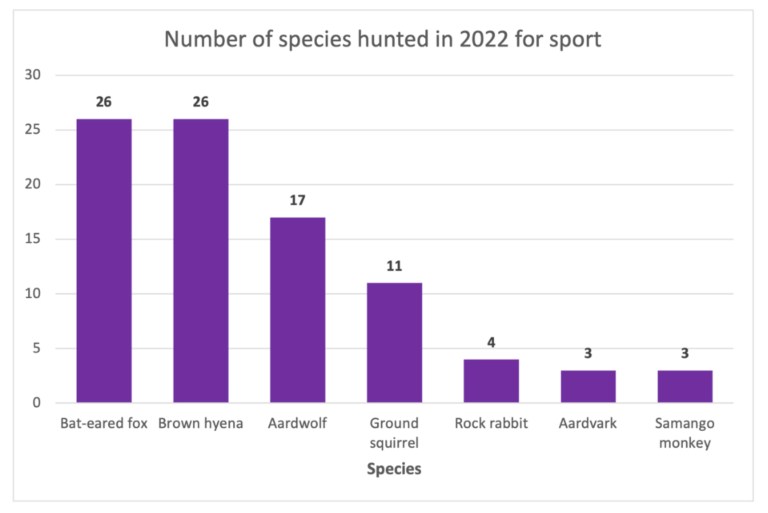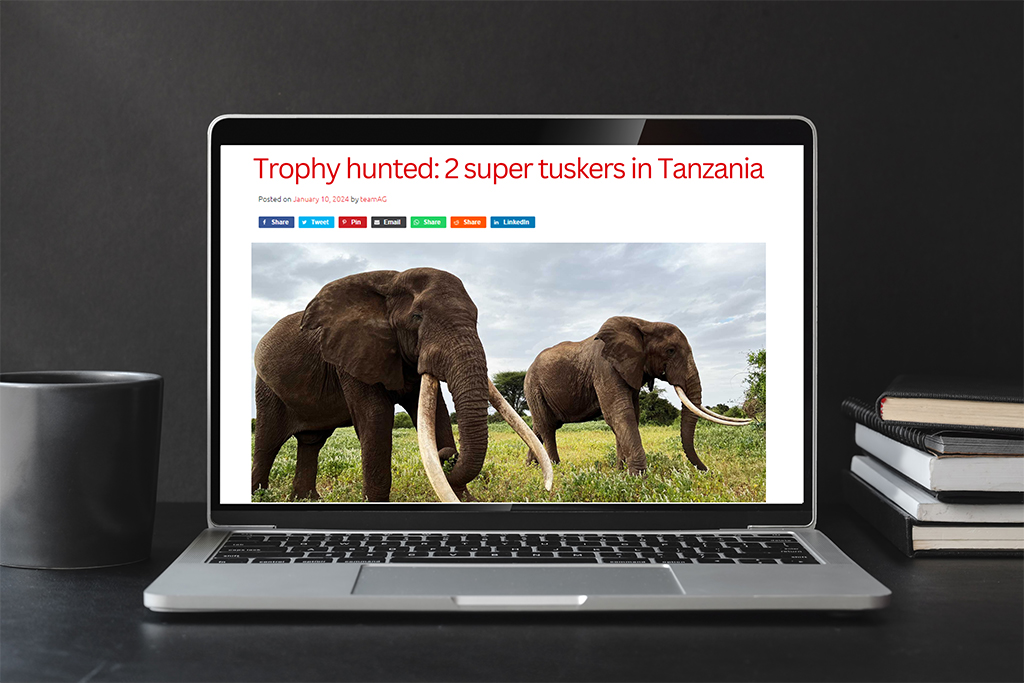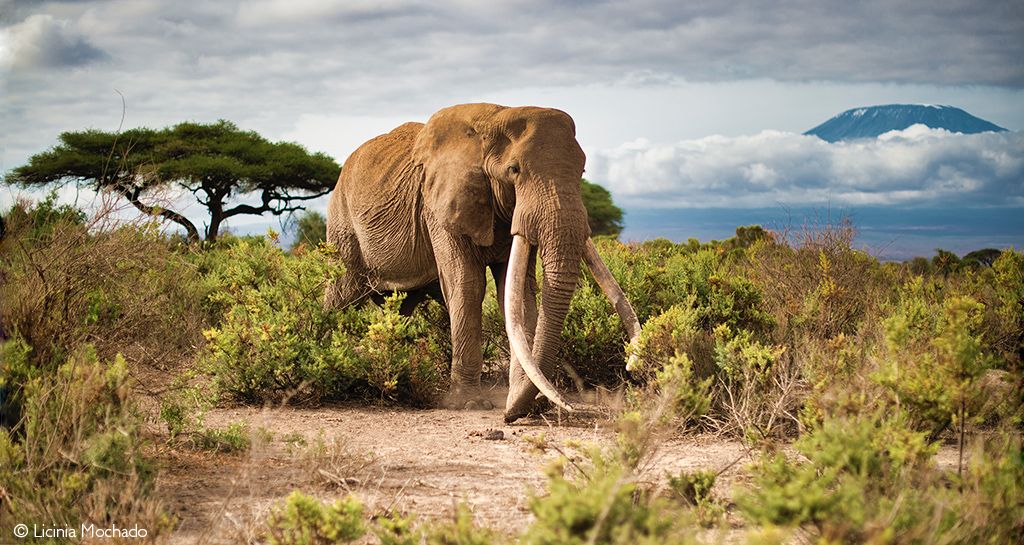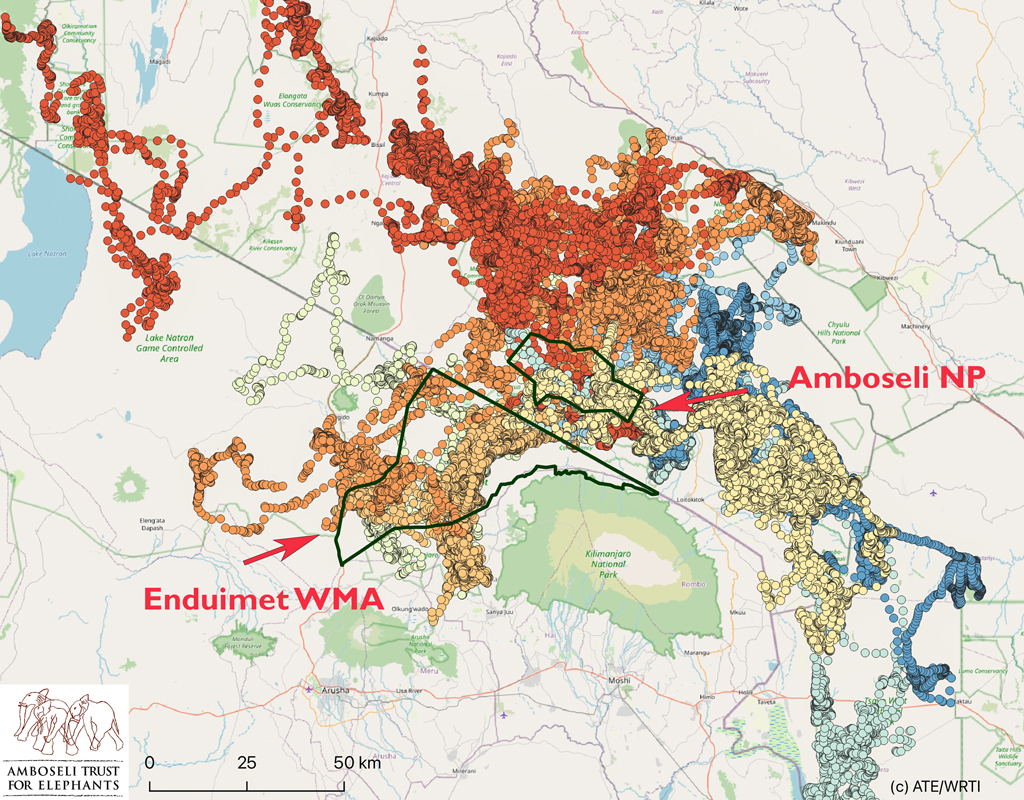SA’s ‘R3.4-billion’ hunting industry – should a simple tourist levy replace recreational hunts?
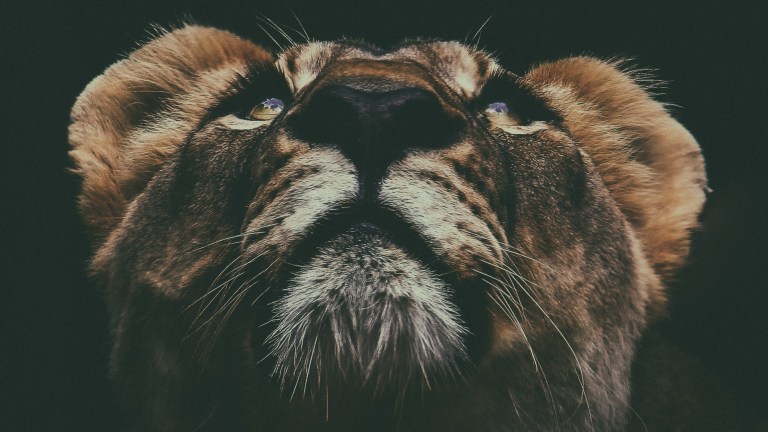
A proposal for a tourism tax wants to shut down captive lion hunts as well as other forms of ‘trophy hunting’. World Animal Protection, which has contributed to the study, is planning more research to test feasibility. (Photo: Unsplash / Prince David)
By Tiara Walters | 22 Oct 2023
As the debate on the ethics of ‘trophy hunting’ rages on, a new international study claims to offer a proposal that would sound the controversial industry’s death knell — by taxing tourists a ‘lion protection’ fee. But is it really time for the entire hunting industry to disappear in life’s great rear-view mirror?
_______________________________________________________________________________________________________________________
When it comes to South Africa’s charismatic megafauna, there are those who hold that a wild animal’s natural habitat is neither on a plate nor a wall. For some conservation and welfare groups, in fact, shooting high-profile or other species is abhorrent, and they worry the practice is damaging South Africa’s economy, even though the hunting industry may generate a rough spending stimulus of about US$180-million (R3.4-billion) a year.
It might even be more, or less, than that, depending on who one speaks to.
Yet, a new open-access study proposes an ambitious plan: a “modest lion protection fee” charged to international tourists — whether from overseas or other parts of Africa. The idea is to replace the money made by the recreational hunts of mostly large mammals — “trophy hunting” — by paying the hunters and their staff to go away, or to move to hands-off wildlife tourism such as photo safaris.
The joint peer-reviewed study, co-led by Pretoria University and World Animal Protection, a welfare NGO, said they had found “universally strong” support for a levy of up to $7 a day.
It also “revealed a desire to finance the protection of the nation’s iconic wildlife through paying a lion protection fee”, said World Animal Protection’s Dr Neil D’Cruze, a contributing author.
Of the 900 respondents — frequent international travellers who either visited South Africa or considered doing so — 85% endorsed the mooted fee as either a “great” or “good” idea.
Capitalising on the moment
These days, not only flag-waving activists say they are perturbed by the reputational implications of what they have panned as cruel hunting.
Last month, the South African government invited public input on the new draft policy on the “conservation and sustainable use” of rhinos, elephants, leopards and, indeed, lions. At the heart of the proposed reform, the draft argues, is the need to address damage to the country’s reputation no thanks to intensive breeding and shooting of captive lions.
This joint study, which can be read for free in the journal Global Ecology and Conservation, says it wants to capitalise on that momentum.
“We set out to test whether inbound visitors to South Africa would be willing to pay a ‘lion protection fee’ that could compensate for any revenue from trophy hunting lost were it to be banned,” said Dr Tom Moorhouse, the lead researcher. “People’s willingness to pay was so strong it could generate enough funds to equal, if not exceed, those currently generated by trophy hunting.”
Based on predicted 2023 tourism trends, the authors claim this initiative could, ultimately, rake in $176.1-million every year — potentially eclipsing precisely what they suggest the hunting industry is worth.
And the source of those funds, according to the proposal, would be international tourists.
Respondents from France, Germany, the UK and the US said they would shell out an extra $6 to $7 per day. Southern African tourists were willing to pay no more than $4.
While 900 people cannot necessarily be taken as a “universally strong opposition” or even representative sample of tourists visiting South Africa, the chosen respondents probably reflect the typical tourist, the authors conclude — especially since they hail from typical source countries. (In 2021, a separate survey found that more than 10,500 European tourists opposed hunting African wild animals.)
In theory, at least, the proposal secures a happy future for lions and South Africa’s other prominent wild ambassadors — plus a feel-good holiday for tourists. If a single traveller spent an extra $7 a day during a week-long break, those good vibes would cost them just $50. That is the price of a meal for two in an upmarket restaurant.
The study moots other alternatives. Maybe a once-off air departure tax of about $50, which “should be sufficient to replace the entire revenue from trophy hunting”.
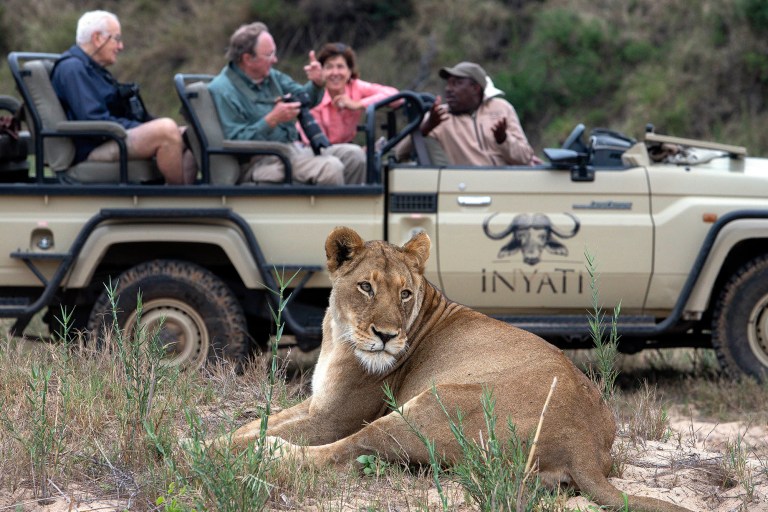
Safari tourists watch a lion on a game drive in Sabi Sand Nature Reserve, Mpumalanga. As wildlife tourism rebounds in South Africa, the industry is still impacted by negative perceptions. But lions cruelly shot at close range without fair chase is a result of rogue hunters rather than the regulated industry, a professional hunting organisation says. (Photo: David Silverman / Getty Images)
Cautionary tails
As much as the “lion protection fee” seeks to leverage the momentum of the new draft policy, the latter — years in the making — still envisages a positive socioeconomic role for potentially transformed aspects of hunting in South Africa.
For instance, the draft policy says it wants to clean up the illegal harvesting of leopards — a species that makes international hunting packages “competitive”. The rosette-spotted big cats also hold cultural significance due to their skins, the policy contends.
And while ecotourism can replace some hunting revenue, the fee proposal concedes, it may not be a viable solution everywhere, because it is precisely those easy-to-reach, jazzy private reserves that well-heeled tourists like most — possibly leaving vast previous hunting areas without a source of financial incentive for conservation.
There is a trenchant warning hovering in Botswana’s not-so-distant past: after that country banned hunting tourism in 2014, local groups saw their average yearly income plunge by 43%. Two of these groups had provided jobs for 150 local residents — so the potential to disrupt community livelihoods is real. The study acknowledges this.
Would the real industry value please stand up?
Suppose those tourists did pop out the $176.1-million golden egg that kills off hunting as we know it, there is still an elephant in the room. Just how much is the hunting industry actually worth?
Due to limited funds, not many studies have attempted to glean an industry value — the figure used by the fee proposal was published half a decade ago, in 2018. Calculated by Northwest University, it was paid for, the authors of that study told Daily Maverick, by major hunting associations.
However, the university’s Professor Peet van der Merwe told us the funding barely covered their expenses because they did not “have that kind of money to fund research”. (For his part, Van der Merwe also expressed his doubts that South Africa possessed the institutional capacity to manage the proceeds of “protection fees” while keeping corrupt big spenders at bay.)
Another independent study has suggested that the value of the hunting industry may even be “massively overstated”. If that were the case, this fee proposal’s target could be within reach.
The US$176.1-million question is: What to do with the proceeds of the “lion protection fee” — that is, if the current proposal advances against the odds of hunting tourism that still enjoys formal policy support?
As Van der Merwe pointed out, determining who gets the funds might pale in comparison to how they are spent — or misspent, especially if revenues fell into the hands of provincial governments already tainted by deep-seated corruption.
“Once collected, the funds need to be appropriately allocated. How would this be done and who would do it?” asked Michael ’t Sas-Rolfes, a conservation economist and member of the IUCN’s sustainable livelihoods and African rhino specialist groups. “Governments in developing countries facing political and resource constraints are notoriously bad at doing this.”
He also argued that assessing hunting’s national economic value based on GDP or general tourism figures was inadequate, emphasising the local benefits of ethical hunting tourism.
According to him, the role of legal hunting and its support for conservation was under-researched, poorly understood and even likely underestimated.
For instance, legal rhino hunting in Namibia and South Africa generated substantial annual income, with at least $8-million per year from rhino trophy fees, he argued. This funding supported anti-poaching efforts and encouraged private ownership and conservation of rhinos outside state-protected areas, said ’t Sas-Rolfes.
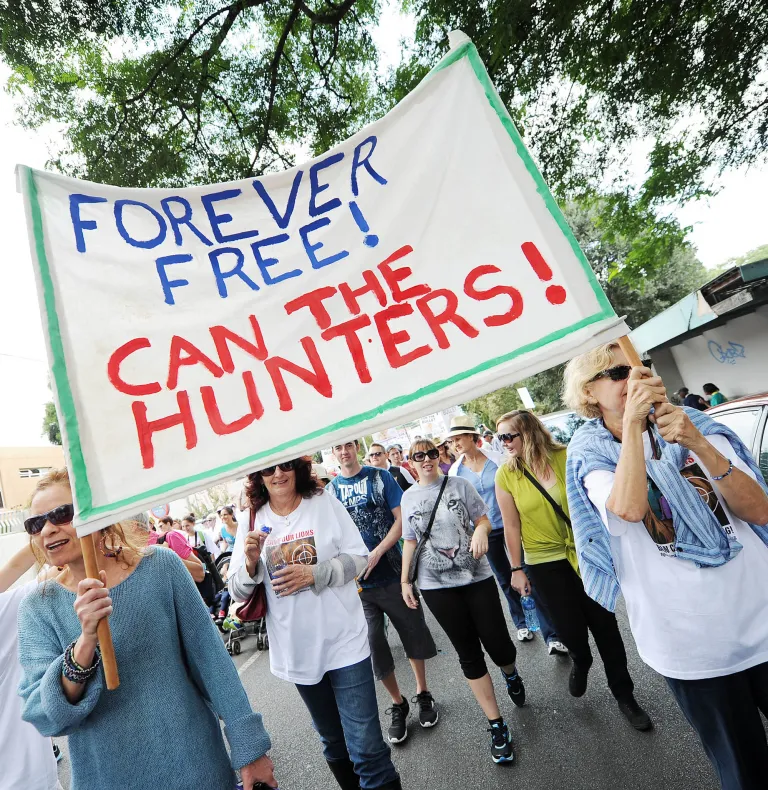
The debate against captive lion hunts has raged for years. Here, in 2014, anti-hunt protesters join a global march in Johannesburg. (Photo: Gallo Images / Foto24 / Mary-ann Palmer)
Lions are already relatively healthy
Wilderness Foundation Africa CEO Andrew Muir cited past attempts at implementing voluntary conservation levies that failed due to lack of uptake.
He told us that the concept of a levy was a “good one”, but unlikely to get off the ground without national authorities and conservation entities running such a show.
“In South Africa we have healthy populations of wild and wild managed lions. While we always need funds for conservation purposes, these populations of lions are stable relative to the rest of Africa,” Muir said. “The problem we’ve got is with the captive breeding of lions and the potential contamination of captive-bred lions with wild lions — as well as reputational and other related issues. That’s a different kind of problem to what other African countries have. The solution here is to close the captive breeding of lions as per the government’s latest draft policy position.”
Closing down the industry in a financially smart way may present its own protracted problems, as the draft policy does not currently have a plan on how to do that.
However, Muir emphasised the importance of transformation and involving local communities in conservation efforts, suggesting levy proceeds ought to go to communities. He also suggested repurposing hunting operations into nature-based tourism ventures.
Professional hunters: ‘Separate fact from emotion’
Dries van Coller, the CEO of the Professional Hunters’ Association of South Africa, said hunting was swimming in misconceptions and lamented the challenges of changing public perception.
Terms like “blood sport” and “trophy hunting” were reductive and stigmatising, and ignored the practice of hunting in its entirety as a “heritage” experience. He distinguished between unethical practices like “canned hunting”, which his association condemned, and “responsible” hunting conducted on accredited facilities.
“You’re not allowed to hunt a lion from a vehicle or over bait. You must do it on foot, and you can’t use artificial calling. There are a whole lot of rules we put in place to ensure so-called fair chase, so that the animal can evade,” he said.
He cited a model he believed had significantly contributed to South Africa’s conservation achievements, stressing that private landowners were motivated to safeguard their wildlife populations due to the economic advantages involved.
Without incentives, he continued, communities may resort to environmentally damaging practices like cattle and goat farming, undoing a decades-long success story that included hunting. For Van Coller, hunting and wildlife-related tourism provided a sustainable and environmentally beneficial alternative for communities.
For these communities, such an alternative was not only a lifeline, but an opportunity for economic improvement — some of the poorest villages survived next to Kruger National Park which has seen a 200% snaring surge since 2020. In part at least, this was likely due to pandemic-driven poverty, Environment Minister Barbara Creecy has said.
“These are the poorest people that we see in the country. And how do they benefit in any way from their wildlife?” asked Van Coller. “At this stage, [ecotourism] is seen as a white elitist type of activity.”
For that reason, he said he wanted to see more local communities in conservation efforts. Like the latest draft policy, many promises have been made, but the reality was that communities often did not see the benefits.
The “lion protection fee” could be valuable if used correctly. But its focus should shift from closing down the entire hunting industry to cleaning up “rogue” elements, seeking out conservation opportunities such as addressing potential overpopulation, and rewilding lions in regions where they were endangered or extinct. This approach would have a broader conservation impact beyond South Africa, he contended.
“It’s a nice ideology to try and say, well, we’ve got to save the lion because it’s endangered and we’ve got to save the lion because these are the challenges there,” he said, “but scientific facts and emotion must be divided.”
Initial insights
There is another critical consideration: what image-conscious tourists claim they might do versus the real-world act of digging into their pockets.
World Animal Protection’s Dr Neil D’Cruze, one of the study authors, agrees that wild lion populations are stable, but also highlighted what he called a material shift in global public opinion — driven by growing concerns for animal welfare and ethics.
D’Cruze said the authors were flexible and open to alternatives such a levy name that emphasised conservation and community transformation.
He also acknowledged the complexities of discontinuing the recreational hunting industry — and advocated careful planning.
“Discontinuing trophy hunting in South Africa presents challenges that demand careful consideration to prevent unintended negative consequences. Implementing such a plan requires diligent deliberation, addressing administrative logistics and adaptability to fluctuations in visitor numbers,” said D’Cruze, who indicated that they would do more feasibility studies.
“To ensure transparent and effective fund allocation, it’s essential to address issues surrounding the enforcement and evaluation of directives. Determining the responsible entities for raising and disbursing levies is also complex, and this must be taken fully into account, particularly given the current low levels of public trust in South African institutions.
“But it’s important to note that the concept of tourism taxes we propose is not novel, as 22 countries worldwide already levy tourists to preserve their natural and cultural heritage, offering valuable insights for South Africa,” he said.
As for a lack of authoritative economic data, he said the study authors cautiously estimated a compensation target which exceeded Northwest University’s previous figures of US$153-million. The larger estimate “provides a conservative test”, he contended.
Dr Herbert Ntuli, a contributing researcher from Pretoria University, said: “Trophy hunting is controversial. On one hand it can generate revenue and create conservation incentives for local communities. But others have argued that it can also damage the economy and conservation reputation if international tourists choose to visit elsewhere.”
Ntuli noted: “Given the current situation, further exploration of a ‘lion protection fee’ should be carried out. It could be a vital piece of the puzzle to prevent negative consequences for wildlife or livelihoods in South Africa.” DM



